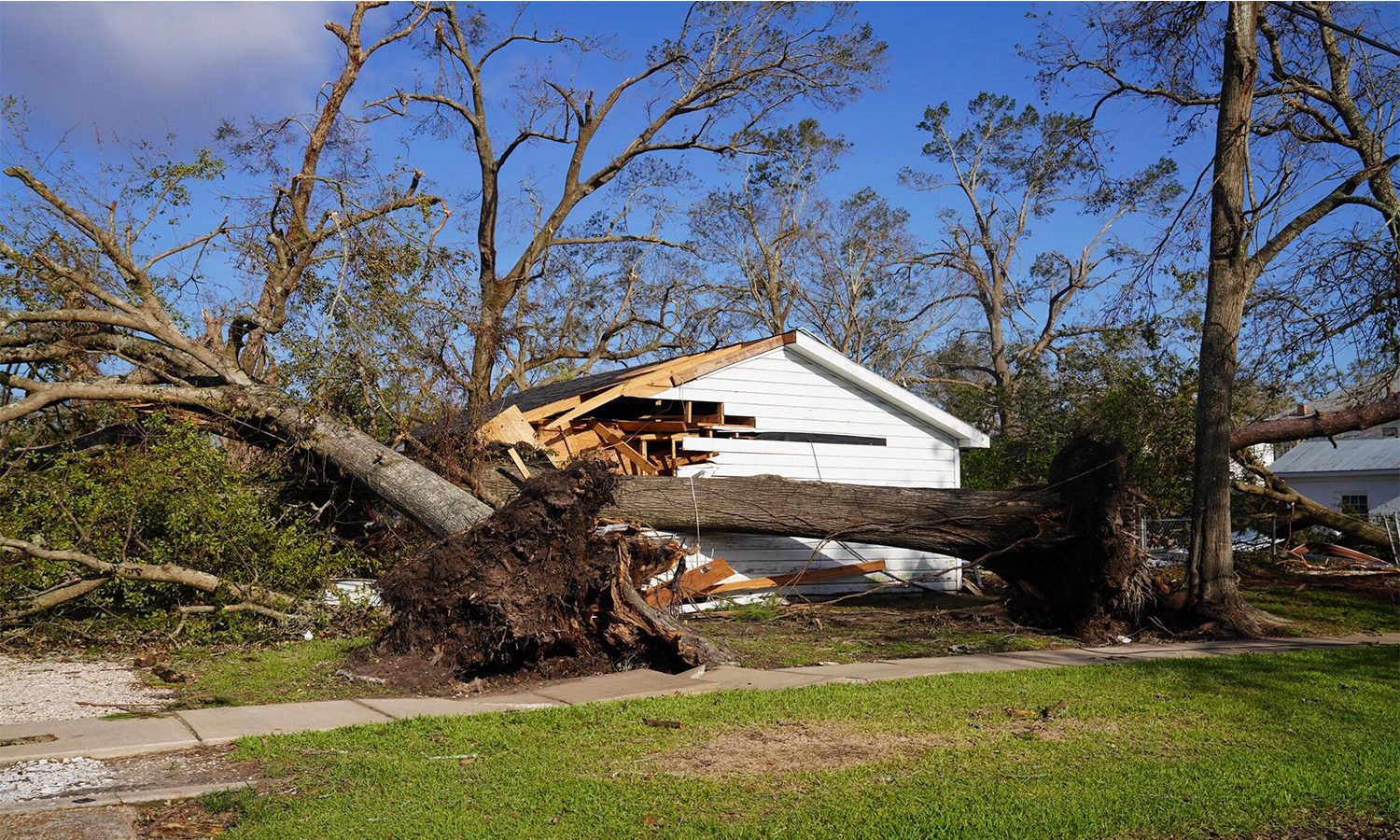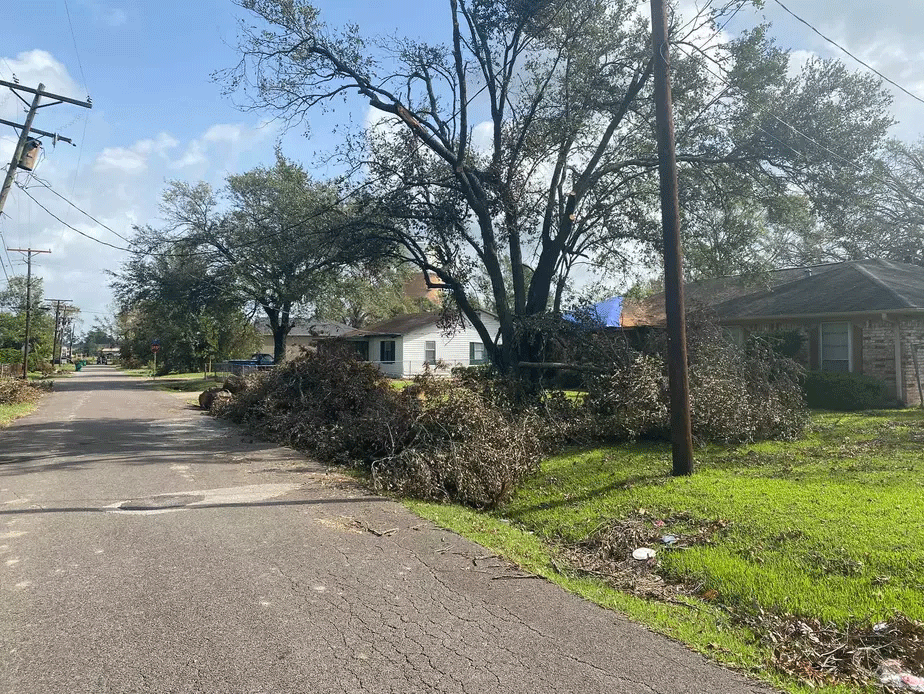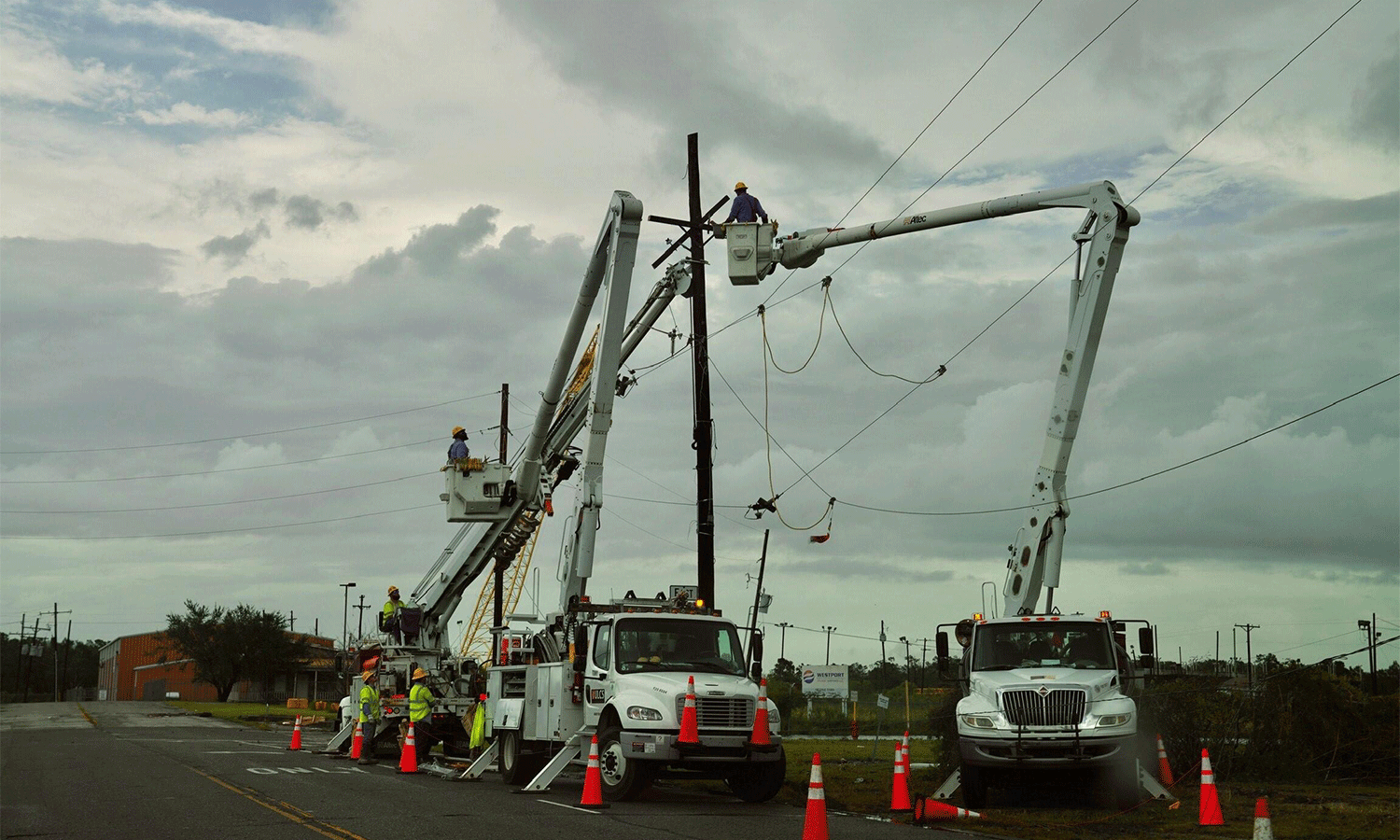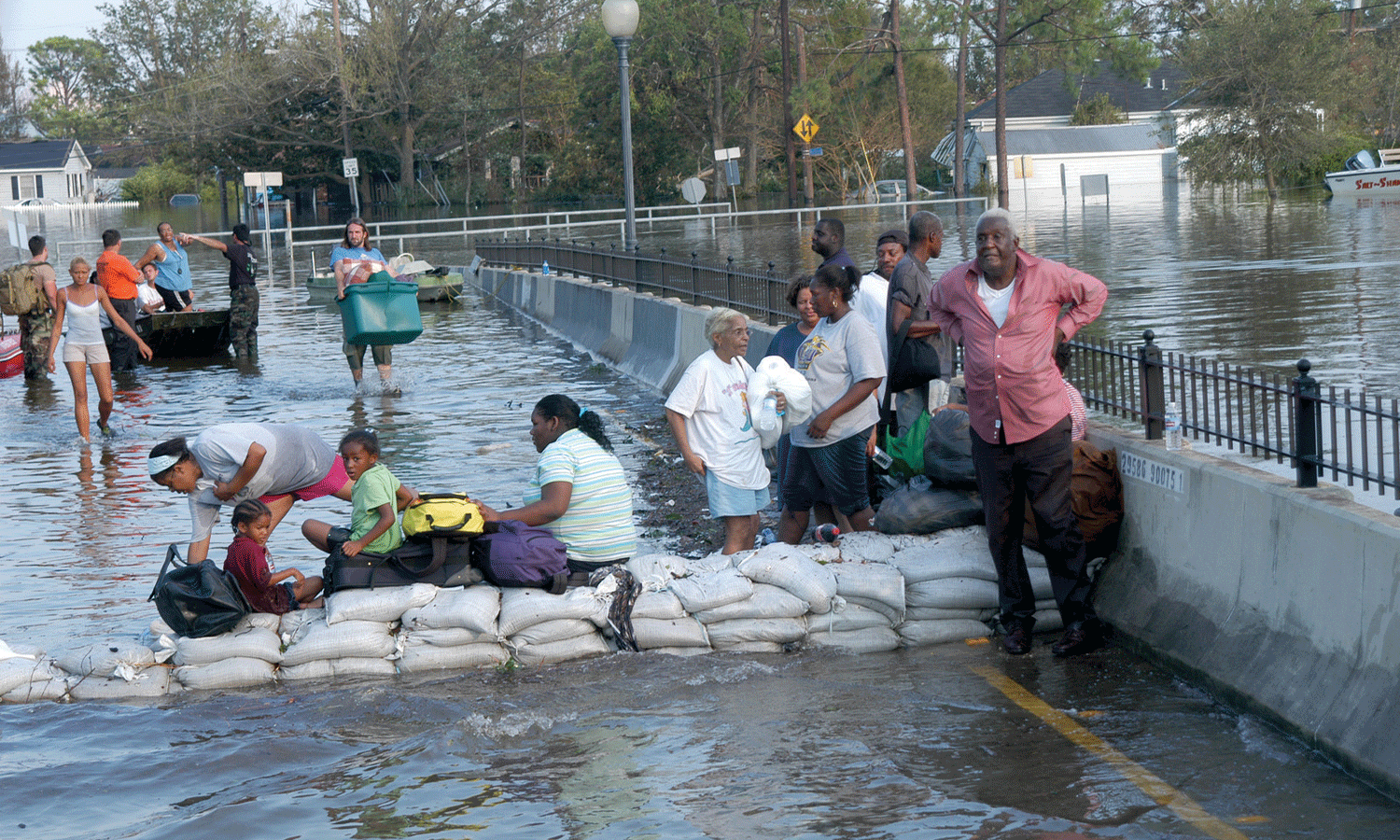Hurricane season starts today, June 1. In the average year, entering hurricane season is a cause for concern, especially where I am in the South. With our changing climate, that concern is greater: hurricane season is now producing more powerful storms, capable of greater harm. And with the ongoing pandemic, economic recovery and widespread vulnerability of people and communities, that concern is—or should be—acute. Our team of experts will be watching six things closely as this hurricane season unfolds.
Although I grew up on the Gulf Coast—in Mobile, Alabama to be exact—it has been a long time since I have been here during hurricane season. Unfortunately, I find myself here this year, for at least the next month. I did not come to see my mom sooner because I was waiting for my COVID-19 vaccination. I received my second vaccine on April 1, the same week my mom began her cancer treatments. I left Maryland immediately after my vaccine for the 15-hour drive to Mobile with my dog, Layla. It was my intent that both my mom and I would be back in Maryland before the hurricane season started. Unfortunately, it looks like we will now be here for the beginning of hurricane season.

So, with my unexpected presence, front and center, for hurricane season, I—with input from some of my UCS colleagues—want to reflect on some reasons for real concern here in Mobile, and in all hurricane-prone places.
1. COVID-19: Evacuation plans, vaccination rates and fast-spreading variants
Since I am going to be in Mobile for the first part of the hurricane season, I decided to find out what Alabama was doing to prepare residents for it, particularly in the face of COVID-19. The second week in May was Hurricane Preparedness Week 2021 in Alabama, and we were told “what every Alabamian needs to know” to prepare. I fully expected that information to be different, as we define our new normal in the face of COVID-19 and its variants. After all, in 2020 Mobile County in Alabama posted a statement about preparing for hurricane season in the presence of COVID-19. However, the 2021 plan did not even mention the virus, which is concerning because we are still very much at the mercy of COVID-19 and its variants.
The virus is still actively circulating throughout the hurricane-prone coast of the United States. Most Alabama counties are still identified as “hot spots.” Although we are in a far better place than last year, given the ongoing vaccine rollout, we are not yet out of the woods.
And while the fast-spreading variant first found in the U.K. (B.1.1.7) is now the dominant virus circulating across the country, it is found at especially high rates in some US regions, including the Gulf and Southeast, and now accounts for more than 70 percent of the virus circulating in the Southeast.

- Large majorities of eligible people in hurricane-prone states have not been fully vaccinated.
In the lower 48 states, there are 126 counties at risk of storm surge from a Category 5 hurricane, according to NOAA, spanning from the Gulf Coast of Texas to Virginia. Based on our analysis, just 36% of eligible people across those counties is fully vaccinated, compared with the national average of 48%.
In low-lying Louisiana, the area at risk of this storm surge extends well inland, encompassing 21 counties (parishes) in all. Only six of those have at least 40% of eligible people fully vaccinated. In most of the rest, that rate is one-third of eligible people, or less. And in coastal Cameron Parish, where Hurricane Laura made landfall last year before churning inland and destroying 10,000 homes, that figure is just 12%.

In Alabama, only 29% of all residents have been fully vaccinated, but even with Alabama’s lower than average vaccination rates, the state is open for business, including retail stores, restaurant dining, bars and breweries, personal care salons, houses of worship, entertainment venues, gyms and beaches. Vaccination-wise, this part of the Gulf Coast is simply not yet prepared to safeguard public health amidst a major hurricane.
- Hurricane evacuation means close contact
When people evacuate due to a hurricane, they often cram together in vehicles and in their final destinations. And standard evacuation and emergency management procedures put lots of people in the same space, like school gyms. Think of the Louisiana Superdome, post-Katrina, except now with a deadly virus circulating. You get the picture.
All of this is definitely concerning for Alabama, but it also begs the question for the rest of the Gulf Coast and the rest of hurricane-prone US: how ready are we this year for the storms that could come?
2. Toxics
The Gulf Coast is home to hundreds of large petrochemical plants, oil wells and refineries, and Superfund sites containing large quantities of toxic material. Along with heavily polluting power plants, these sites contribute to abnormally high rates of cancer, asthma, and other health problems, particularly among people of color living in the region. A perfect example is the heavily industrialized, flood-prone stretch of the Mississippi River between New Orleans and Baton Rouge, often referred to as “Cancer Alley.” The presence of so many industrial facilities means that every hurricane strike has the potential to expose people living in the area to even greater concentrations of toxic chemicals.
This is a problem that arises storm after storm. For example, when Hurricane Harvey dumped record-breaking amounts of rain over the Houston area in 2017, our team’s analysis indicated that nearly 200 toxic sites may have been exposed to flooding. And that was in addition to explosions at an Arkema chemical plant in Crosby, Texas, and accidental chemical releases that rendered floodwaters toxic. Last year, Hurricane Laura also caused fires at the Biolab chemical facility in Louisiana, leading to plumes of toxic air that necessitated shelter-in-place orders. I discussed that event in my blog here.
The heavy presence of the petrochemical industry along the Gulf Coast is a perennial cause of concern as hurricane season gets underway, and also a key reason that the EPA must monitor and enforce pollution standards and not let companies off the hook during emergency situations, as has happened in the past.

3. Unemployment and poverty
Weathering a storm requires cash. In many coastal states, especially the Gulf, there are large numbers of people living in poverty and with low-income wages. In addition, the rate of unemployment in some of these areas since the start of the pandemic is particularly high (see the map below). In the Houston area, for example, unemployment rates as of March of this year were more than double what they were before the pandemic (8-10% vs. 4-5%).
And in Miami, roughly four times as many people were unemployed as of March compared with February of 2020. Despite the federal and state unemployment assistance, unemployment rates give a general idea of the state of the economy in a place, which impacts both evacuation and recovery. For instance, the cost of evacuation for hurricanes Katrina and Rita has been estimated at upwards of $300 if people go to a hotel or motel. Those living in poverty or with low incomes may not have the resources to evacuate, and many form caravans where they pack cars with people and valuables to escape the hurricane—still a situation of concern in areas with low vaccination rates. When money is tight, people are forced to make hard decisions over evacuating or facing the risks of staying put.
When it comes to recovery, people who need the most assistance are usually the last to get it. It has been shown that the way federal aid is handled post-disasters leads to differential access of resources for disenfranchised segments of the population, and actually increases inequality in the U.S.
What is worse, a handful of states in hurricane territory, including Alabama, Texas, Mississippi, Georgia and South Carolina, have opted to discontinue expanded unemployment benefits earlier than is required by the federal government, forcing people back into risky, low-wage work settings. People need time and resources to get back on their feet after the last year and prematurely dropping unemployment programs—especially in hurricane prone regions —is the wrong move.
4. Food insecurity
The threat of a hurricane sends many people running to the grocery store to stock up—if they can do so, as major storms can disrupt the shipment of food and lead to food shortages. But the pandemic has already taken a terrible toll on the ability of many households to put enough food on the table.
Millions of people experienced an abrupt loss of income during 2020, which too often plunged them into food insecurity. Low-income people and communities of color suffered the most—as the majority already lived with the challenge of food insecurity and because those populations disproportionately hold low-paying food production and service jobs, as did many essential workers across our food system.
Even now, when the rate of food insecurity nationwide has come down from the staggering high it hit last year, it remains well above the 2019 level, which was the lowest in two decades. The nonprofit Feeding America has projected that 42 million people in this country (1 in 8), including 13 million children (1 in 6), may experience food insecurity in 2021. And significant racial disparities in food insecurity persist. More than one in five Black individuals are believed to have experienced food insecurity in 2020, and the projection for 2021 remains stuck at that dismal level. According to Feeding America, Texas faces a 27% increase in the number of children facing very low food security for 2021 over 2019 – an additional 102,670 potentially hungry kids, for a total of 479,660 in that state alone. These are families without the means to stockpile food in advance of a storm.
This hurricane season and beyond, UCS will be urging the Biden administration to make real gains toward ensuring not just food security but true “nutrition security” for everyone in this country for the long term.
5. Grid vulnerability
Hurricanes are notorious for causing another serious impact: power outages, and the devastating consequences those outages can bring. In the US, the power grid remains highly vulnerable to severe storms, and in too many communities people have been left vulnerable to the long-lasting outages that can ensue. Those consequences can prove deadly, and disproportionately affect communities of color and people in poverty. In particular, the loss of cooling, combined with inefficient homes where the temperature rises quickly, combined with a lack of access to community cooling centers—let alone cooling centers equipped with backup power supplies—has continued to result in lives lost. People who rely on powered medical devices or refrigerated medicines face increasingly difficult and dangerous conditions as outages persist. The resulting costs can also be significant, from the immediate loss of refrigerated food to the multi-year increase in utility bills to cover the storm response—increases on top of energy costs that are the majority of many households’ budgets.
It does not have to be like this. Severe storms will always pose a severe threat to the power grid—from high winds to pounding rains and storm surge causing floodwaters to rise —but with the right direction, our grid – and our communities – can become far less vulnerable. That requires two actions: 1) boosting the electricity resilience of the broader power grid so that it’s better prepared for, and better able to quickly bounce back from, the climate-related impacts it faces, and 2) boosting the electricity resiliency of our communities, so that even if – even when – the broader power grid goes down, communities are still left with homes that are livable, healthy, and safe, and places to go to stay cool and to access backup electricity supplies.

6. Health
All of these issues point toward major threats to public health —to physical and mental health, if this hurricane season presents some extreme storms. The Gulf South has some of the highest rates of pre-existing health conditions, including obesity, respiratory diseases and diabetes that put people at higher risk in a crisis. Some Gulf Coast states are dealing with rates of depression this spring that are well above the national average, especially among the poorest—which is really no surprise. Combine this with the ongoing threats outlined above, and the thought of adding a major hurricane is mind boggling!
So, what can we do?
There are two ways we can quickly take action: (1) By doing all we can to stay safe this hurricane season: and (2) by pressing state and federal elected officials and other decisionmakers in government to do everything they can to get ready well ahead of the first landfalling hurricane this year, and to make this the last hurricane season we face so exposed to harm.
To stay safe, we must:
- Get vaccinated and practice COVID-19 precautions, like mask wearing and social distancing. If you have questions about the vaccine, check out our FAQ in English and Spanish. Vaccine.gov shows available locations by zip code.
- Have a household hurricane evacuation plan that is COVID-19 smart and, if your state or county does not have a plan, give them hell. Remember, the trend toward rapidly intensifying storms means that we may not have much lead time to prepare and evacuate if necessary.
- Have a plan for staying safe and cool during a blackout.
- Look out for our neighbors, especially those who may be elderly or home-bound
- Take care of our health, including updating and filling prescriptions.
- Take care of our mental health, including seeking support if we need it.
There’s a powerful fact that’s widely cited: for every $1 invested in resilience and natural hazard mitigation, $6 in post-disaster recovery costs are avoided. Wow! That is so powerful, but it is just a part of the story. Our investments in resilience mean, foremost, avoided harm to people and communities. Harm that can become trauma and grief for people and families and can trigger downward cycles of loss and decline for communities and economies. Harm that will be compounded and grow worse as climate change makes extreme events like hurricanes more severe.
Communities across the country have been hobbled by the pandemic and economic crises and are struggling to recover. As the indicators we’re tracking suggest, regions like the Gulf Coast are especially vulnerable to harm going into this hurricane season. This should be the last hurricane season when this vulnerability is so high; it’s too much for people and communities to be expected to bear.
But these are harms that can be avoided if we invest big in resilience. Imagine how we would mobilize to defend against an enemy that came ashore each year and destroyed entire communities, taking lives, livelihoods and life savings. Well, it is time to mobilize like that against the now-amplified threat of climate disasters.
In addition to the measures mentioned above, here are some steps our country can take now:
- The Biden administration must ensure its “whole of government” approach to climate change centers adaptation alongside climate mitigation, since both are required for real resilience.
- Part of this will involve making major investments in pre-disaster preparedness. For instance, the administration has just announced that FEMA will provide $1 billion in 2021 for the Building Resilient Infrastructure and Communities (BRIC) program.
- And it must pull out all the stops to adequately staff FEMA, the nation’s emergency response mechanism, which is badly strapped for personnel right now.
- Congress can pass an infrastructure bill that builds for the long term by requiring that ongoing and projected climate change be considered and addressed. And that also takes an expansive view of what we mean by infrastructure, making way for investment in community infrastructure that contributes to social capital and cohesion – arguably as essential to community resilience as anything.
- Federal investments in infrastructure should – and under the Biden Administration’s Justice40 initiative, will – prioritize historically marginalized communities. The disproportionate harm they face during disasters and in our changing climate is an injustice that must be addressed now.
I plan to be proactive as I ride out at least part of hurricane season here in Mobile. I suggest that everyone do the same. We all should do what we can to ensure that we are totally prepared, and a part of that is including preparations for protecting ourselves and others against COVID-19. At the same time, we must hold our local, state and federal government accountable. As for me and mine, we will do whatever is necessary to protect ourselves, our families and our friends from the adverse effects of climate change, now coupled with COVID-19.
Astrid Caldas, Kristina Dahl, Juan Declet-Barreto, Julie McNamara, Karen Perry Stillerman, and Erika Spanger-Siegfried contributed to this post.


